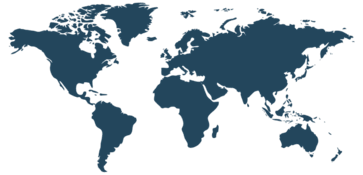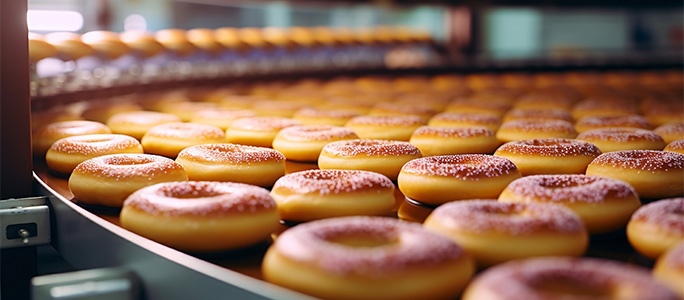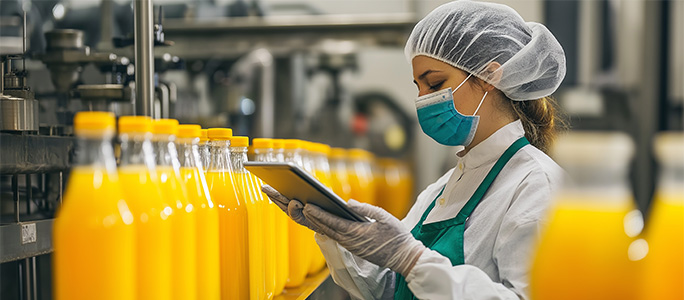
Ever since its outbreak in 2020, the corona virus pandemic has disturbed hundreds of thousands of lives and livelihoods, creating a sense of panic among the people all around the world. Businesses across industries too have struggled at varying levels.
However, with the rapid vaccine rollout across the globe, a sharp decline in severe COVID-19 has been observed. And, even as the virus isn’t going anywhere anytime soon at least for now, industries have started picking up the pieces, and are gradually getting back to business as usual.
The global process manufacturing industry too has taken the road to recovery. With a remarkable show of resilience, and an optimistic outlook, the industry is marching towards normalcy.
Now that first half of 2021 is gone, the focus is on the remaining half, and beyond.
What’s the forecast for the rest of the year- for the process manufacturing industry in general, and for some of its verticals such as the food & beverage, pharmaceutical, paints & coatings, personal care & cosmetics, and specialty chemicals industries and their micro-verticals?
We all have heard about the proverbial glass being “half full” or “half empty”. So, how are things going to be like for them? Let’s take a look:
Outlook for the process manufacturing sector
The process manufacturing industry, in general, has experienced an environment of uncertainty for past year and a half.
Though the industry is crawling back to recovery, the segment recoveries for various manufacturing businesses have been uneven, and it will take some time for the industry as a whole to attain the pre-pandemic levels.
But with a positive outlook for the remainder of 2021 and after that, the process manufacturing has its glass half-full. The focus would be on solving forecasting challenges to navigate the disruption.
Also, gaining business-wide visibility could be a way forward for most of the process manufacturers, with digital technologies being a key enabler.
Another area where the process manufacturers would want to focus on in the coming time is the resilience of supply chain.
The pandemic resulted in derailment of supply chain for most businesses, with manufacturers failing to secure timely supplies, and thus failing to meet the orders.
Continue reading, as we explore the trends for the remaining half of 2021 and beyond for the process industry’s verticals.
Food & beverage manufacturing industry
The post-COVID-outbreak supply chain disruption affected the food & beverage industry big time, forcing the manufacturers towards more localized production.
With global supply chains remaining unreliable in the near future, this trend may continue for some more time.
Automation is another area where the food & beverage manufacturers may continue to invest, as it will allow them to get their jobs done faster, and more efficiently.
It will also create new work, and new ways to work, for them, besides helping them make operations more efficient, and being as lean as possible.
The food & beverage manufacturers will also have a heightened focus on forecasting and demand planning.
Some of the other issues that will remain focus areas for the food & beverage manufacturers include food safety, worker safety and cost control.
Pharma manufacturing industry
Some key trends and challenges the pharma manufacturing sector has been facing for a while are likely to continue in the second half of 2021 and beyond.
It includes the rising prices. It is increasingly becoming difficult for the manufactures to produce new medicines, with the cost of drug development rising by 10% every year, forcing them to increase prices.
Avoiding high risks in supply shortages will be another focus area for the pharma manufacturers. They’d be looking to strengthen their supply chain, and avoid reliance on a single supplier, or a few suppliers from the same region.
Digital transformation is going to be another key area of concern for them, as they are likely to invest in digital tools to refine their production cycle and bolster their R&D capabilities.
Digitalization has its downsides as well, with cyber security threats remaining prominent challenge for the pharma industry. The industry focus shall remain on data protection, with around 89% of healthcare organizations experiencing data breaches.
Paints & coatings manufacturing industry
The paints & coatings manufacturing industry is likely to continue to face sharp increase in prices of key raw materials.
The prices of epoxy resin—a vital binding agent for many paints & coatings — have been on the rise since the latter part of 2020, witnessing a sharp hike of as much as 60% in recent months.
The prices of polyester resin have also gone up, so have the prices of petrochemical-based raw materials, which the industry is heavily dependent upon.
Then there are the supply bottlenecks that have been adding to the difficulties of paint& coatings manufacturers. Higher transportation and shipping costs is going to be another area of concern for them.
All these factors will continue to pile pressure on the paints & coatings manufacturers.
Specialty chemicals manufacturing industry
The outbreak of corona virus pandemic last year forced specialty chemicals manufacturers around the world to reduce their expenditures, and scale down their manufacturing operations to 40-60% capacity due to a combination of factors such as pricing pressures, reduced demand, and shortage in raw material supplies, and labor etc.
To succeed in the shifting industry landscape, the specialty chemicals manufacturers are likely to take a slew of strategic initiatives across the functional areas such as R&D and technology, which includes investing in innovation, and adopting new business models for sustained growth.
Personal care & cosmetics manufacturing industry
As the first half of 2021 concludes, it is safe to say that the global personal care& cosmetics industry has done fairly well to bounce back from the after-effects of COVID-19.
However, in the remaining half of 2021 as well as in the next year or two, the focus of the personal care & cosmetics players is likely to remain on maintaining the efficacy and affordability of their products.
With the consumers placing heightened emphasis on physical and mental wellbeing, and need for safe, hygienic products, there will be a considerable need for products with a strong alignment to health, and overall wellness, but backed by efficacy.
Overall, the personal care and cosmetics industry, which has proven that it is relatively more resilient than other industries, is poised for a good run in 2021 and the near future.
The manufacturers are likely to consolidate by keeping digitalization at the forefront, to grab consumers’ attention and offer them with a positive experience both online and offline
Wrapping up
Whenever there’s a challenge, there’s also an opportunity. COVID-19 presented unprecedented challenges in front of the process manufacturing businesses; challenges that were unheard of, and they couldn’t have planned for.
But once the dust settled, the businesses realized they need a tool that can help them sail through these tough times, and prepare them for the future disruptions; one that can help them innovate, change with time to remain relevant, indulge in intelligent demand assessment & planning, revamp supply chain as well as costing strategies, and scale up production to remain prepared to meet high demand, among other things.
And, BatchMaster’s tailored ERP offerings can be of big help to all the process manufacturing businesses.
In the remainder of 2021, and beyond, our solutions will ensure that the proverbial glass always remains full for the food, pharma, paints & coatings, specialty chemicals, and personal care & cosmetics manufacturing businesses and their many micro-verticals.
Get in touch with our process manufacturing ERP experts for a no-obligation consultation, or to schedule a free demo, and figure out how our ERP solutions can help your business become disruption proof.



















